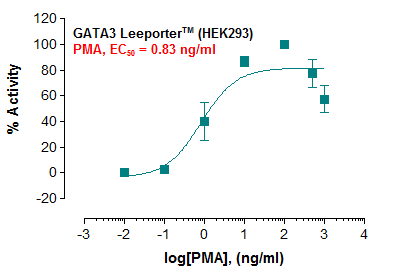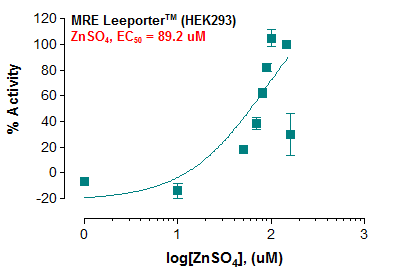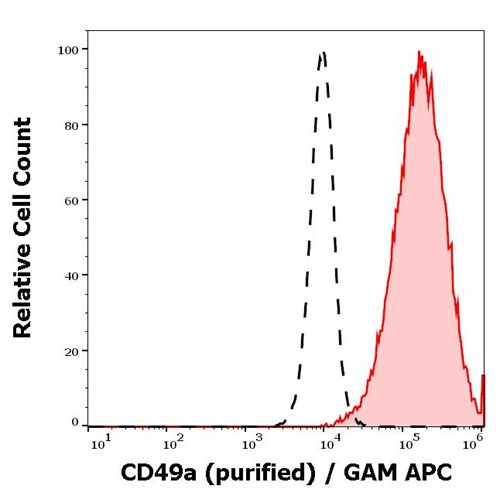Recombinant Human TNF Receptor Superfamily Member 11B/OPG (C-Fc)
Shipping Info:
For estimated delivery dates, please contact us at [email protected]
| Amount : | 50 µg |
| Content : | Lyophilized from a 0.2 µm filtered solution of PBS, pH7.4. |
| Storage condition : | Lyophilized protein should be stored at -20°C, though stable at room temperature for 3 weeks. Reconstituted protein solution can be stored at 4-7°C for 2-7 days. Aliquots of reconstituted samples are stable at -20°C for 3 months. |
| AA sequence : | ETFPPKYLHYDEETSHQLLCDKCPPGTYLKQHCTAKWKTVCAPCPDHYYTDSWHTSDECLYCSPVCKELQYVKQECNRTHNRVCECKEGRYLEIEFCLKHRSCPPGFGVVQAGTPERNTVCKRCPDGFFSNETSSKAPCRKHTNCSVFGLLLTQKGNATHDNICSGNSESTQKCGIDVTLDIEGRMDPKSCDKTHTCPPCPAPELLGGPSVFLFPPKPKDTLMISRTPEVTCVVVDVSHEDPEVKFNWYVDGVEVHNAKTKPREEQYNSTYRVVSVLTVLHQDWLNGKEYKCKVSNKALPAPIEKTISKAKGQPREPQVYTLPPSRDELTKNQVSLTCLVKGFYPSDIAVEWESNGQPENNYKTTPPVLDSDGSFFLYSKLTVDKSRWQQGNVFSCSVMHEALHNHYTQKSLSLSPGK |
Source: Human Cells.
MW :47.2kD.
Recombinant Human Osteoprotegerin is produced by our Mammalian expression system and the target gene encoding Glu22-Leu201 is expressed with a Fc tag at the C-terminus. TNFRSF11B is a secreted protein, containing 2 death domains and 4 TNFR-Cys repeats. TNFRSF11B is a decoy receptor for the receptor activator of nuclear factor kappa B ligand (RANKL). By binding RANKL, TNFRSF11B inhibits nuclear kappa B (NF-kB) which is a central and rapid acting transcription factor for immune-related genes, and a key regulator of inflammation, innate immunity, and cell survival and differentiation. TNFRSF11B levels are influenced by voltage-dependent calcium channelsCav1.2. TNFRSF11B can reduce the production of osteoclasts by inhibiting the differentiation of osteoclast precursors into osteoclasts and also regulates the resorption of osteoclasts in vitroand in vivo. TNFRSF11B binding to RANKL on osteoblast/stromal cells, blocks the RANKL-RANK ligand interaction between osteoblast/stromal cells and osteoclast precursors. This has the effect of inhibiting the differentiation of the osteoclast precursor into a mature osteoclast.
MW :47.2kD.
Recombinant Human Osteoprotegerin is produced by our Mammalian expression system and the target gene encoding Glu22-Leu201 is expressed with a Fc tag at the C-terminus. TNFRSF11B is a secreted protein, containing 2 death domains and 4 TNFR-Cys repeats. TNFRSF11B is a decoy receptor for the receptor activator of nuclear factor kappa B ligand (RANKL). By binding RANKL, TNFRSF11B inhibits nuclear kappa B (NF-kB) which is a central and rapid acting transcription factor for immune-related genes, and a key regulator of inflammation, innate immunity, and cell survival and differentiation. TNFRSF11B levels are influenced by voltage-dependent calcium channelsCav1.2. TNFRSF11B can reduce the production of osteoclasts by inhibiting the differentiation of osteoclast precursors into osteoclasts and also regulates the resorption of osteoclasts in vitroand in vivo. TNFRSF11B binding to RANKL on osteoblast/stromal cells, blocks the RANKL-RANK ligand interaction between osteoblast/stromal cells and osteoclast precursors. This has the effect of inhibiting the differentiation of the osteoclast precursor into a mature osteoclast.
Endotoxin : Less than 0.1 ng/µg (1 IEU/µg) as determined by LAL test.
For Research Use Only. Not for use in diagnostic/therapeutics procedures.
| Subcellular location: | Secreted |
| Post transnational modification: | The N-terminus is blocked. |
| Tissue Specificity: | Highly expressed in adult lung, heart, kidney, liver, spleen, thymus, prostate, ovary, small intestine, thyroid, lymph node, trachea, adrenal gland, testis, and bone marrow. Detected at very low levels in brain, placenta and skeletal muscle. Highly expressed in fetal kidney, liver and lung. |
| BioGrid: | 111028. 2 interactions. |
|
There are currently no product reviews
|

















.png)









